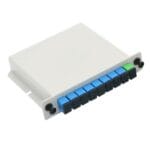Description
An 18U IT rack is a type of server rack designed for organizing and housing information technology (IT) equipment. The “U” in 18U stands for “rack units,” which is a standard measurement for the vertical space within a rack. One rack unit is equivalent to 1.75 inches (44.45 mm) in height.
Therefore, an 18U IT rack has a vertical space of 18 x 1.75 inches, which equals 31.5 inches (800.1 mm) in height. These racks are larger than smaller models and are suitable for setups with a more extensive amount of IT equipment. They are commonly used in server rooms, network closets, or data centers.
Here are some key features and considerations for an 18U IT rack:
- Mounting Rails: 18U racks typically come with adjustable mounting rails that allow you to secure and support IT equipment. These rails offer flexibility in installing devices of different sizes.
- Ventilation: Adequate ventilation is crucial to dissipate the heat generated by the enclosed equipment. Larger racks may have built-in ventilation or options for fans to enhance cooling.
- Cable Management: Cable management features help organize and route cables neatly within the rack. This is important for maintenance, troubleshooting, and overall tidiness.
- Security: Security features become more critical as the size of the rack increases. Look for racks with locking mechanisms to enhance security and prevent unauthorized access.
- Materials: Racks are commonly constructed from materials like steel or aluminum to provide strength and durability. The choice of materials influences the overall weight and sturdiness of the rack.
- Accessibility: Ensure the rack provides easy access to both the front and rear for installation, maintenance, and cable management. Some racks may have removable or reversible doors for convenience.
- Compatibility: Check that the rack is compatible with the specific IT equipment you plan to install, considering both size and weight requirements.



